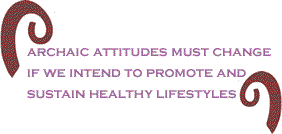In 1969,
a black teenager at a St. Louis hospital died from baffling symptoms that doctors had attempted
to treat over a fifteen month period.  Almost
20 years later, it was confirmed that the patient known
as Robert R. died of AIDS and was probably the first case
in the U.S. Sample tissues had been saved from his autopsy
and scientifically diagnosed by doctors, who by 1987, were
now familiar with the disease. This meant that young Robert
had the disease nearly a decade before what
had been thought was the country�s first known AIDS cases. Almost
20 years later, it was confirmed that the patient known
as Robert R. died of AIDS and was probably the first case
in the U.S. Sample tissues had been saved from his autopsy
and scientifically diagnosed by doctors, who by 1987, were
now familiar with the disease. This meant that young Robert
had the disease nearly a decade before what
had been thought was the country�s first known AIDS cases.
As we observe World
AIDS Day on December 1, Human Immunodeficiency Virus (HIV)
and Acquired Immune Deficiency Syndrome (AIDS) are no longer
scientific mysteries. The epidemic�s scare during the mid-1980s
left many stigmatized and isolated while ignorance abounded.
Sectors of our communities spent valuable time debating
conspiracy theories about the origin while valuable time
was lost not educating high risk populations. We are still
lagging in our prevention and education efforts, particularly
in the black community.
Although there are controversial
views regarding the origins of AIDS, we know with certainty
how the disease is spread. It is passed from one person to another when infected blood, semen, or vaginal secretions
come in contact with an uninfected person�s broken skin
or mucous membranes. That means there are two main ways
to contract the virus: sexual contact with someone
who has the disease or intravenously, such as through a
blood transfusion or as a drug user sharing needles with
someone with the disease. An HIV infected mother can also
pass on the disease to her unborn child.
Knowing how the disease
is spread should make the solution simple: don�t have unprotected
sex and don�t share needles. Oh, if life were so simple.
The latest estimates
by the Centers for Disease Control tell us that those of
us of African descent need to pay close attention. To date,
over one million cases have been diagnosed and nearly 20,000
lives have been snuffed out due to the body�s immune system
being compromised; 65,000 new HIV cases are identified each
year. The numbers of African Americans being diagnosed with
AIDS so far is almost comparable to that of whites and we�re
only about 13% of the population.

The world wide cases
of AIDS are staggering. According to Yale AIDS Watch, there
are 42 million cases of AIDS in the world and 5 million
new cases each year. Three million people, including children,
die annually of the dreaded disease. More than half the
world�s cases are in Africa, which
has been hardest hit by the �Slim Disease,� as it is called
there.
When Robert R. dragged
himself to the hospital, he had already been sick for nearly
two years. The initial assessment revealed that he had a
severe case of chlamydia, so it was clear that the kid was
sexually active. Further examinations by the doctors led
to speculation that Robert was either gay or a male prostitute.
Recently, the CDC listed
St. Louis as tops in Sexually Transmitted Diseases (STDs). The City
was ranked #2 in chlamydia and 3rd in gonorrhea. The City�s
Health Department is shining a light on the problem. The
majority population for both diseases is African Americans
between the ages of 15 and 24 years old. Robert R. fit into
that age group some 45 years ago, when he begin his debilitating
descent to a premature death.
So, what have we learned
in the decades since Robert�s case of chlamydia and AIDS?
A whole lot, but it�s not being effectively transferred
to our communities, particularly to our children. Awareness
campaigns about this pandemic are as challenging to implement
and sustain in Johannesburg, South Africa as they are in New York City.  (South
African leader Thambo Mbeki had denied the reality of AIDS
ravaging his country until he received international criticism.
New York is ranked #1 for diagnosed AIDS cases). (South
African leader Thambo Mbeki had denied the reality of AIDS
ravaging his country until he received international criticism.
New York is ranked #1 for diagnosed AIDS cases).
Parents, schools and
service providers to this age category need to have the
tough conversations with youth about sexuality and responsibility.
But it�s a conversation that transcends youth, as we know
that adults also engage in the same risky behavior.
Our community�s attitude
about these preventable diseases is much too cavalier. Archaic
attitudes must change if we intend to promote and sustain
healthy lifestyles. It begins with information and the demand
for adequate funding for innovative education programs and
extensive testing.
BlackCommentator.com Editorial Board member, Jamala Rogers, is the leader
of the Organization
for Black Struggle in St.
Louis and the Black
Radical Congress National Organizer. Additionally, she
is an Alston-Bannerman Fellow. She is the
author of The Best of the Way I See It �
A Chronicle of Struggle. Click
here to contact Ms. Rogers.


|

